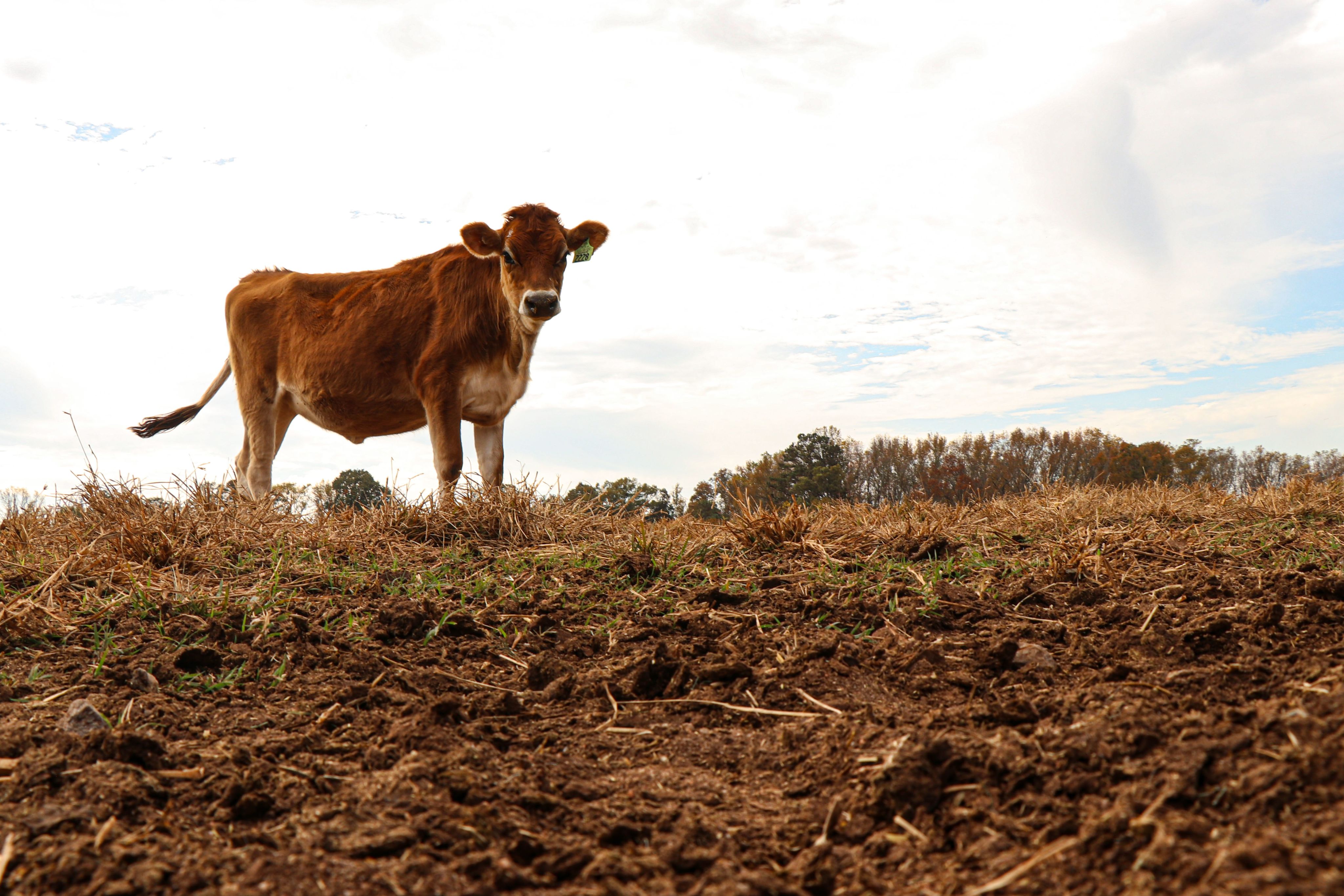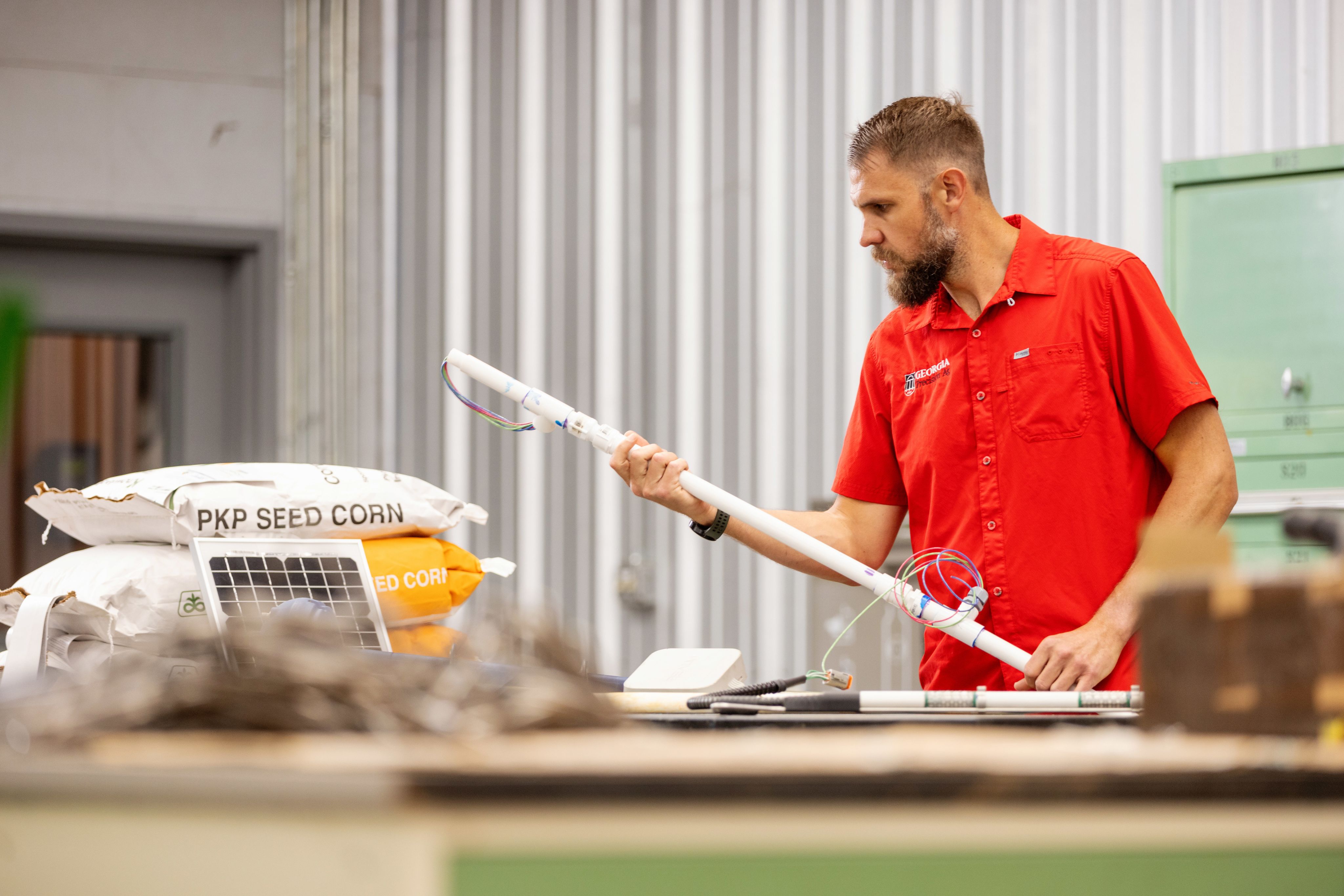Insights for producers
Georgia Ag Impact Report
The Georgia Ag Impact Report provides the state's agricultural stakeholders the research-backed insights they need to support Georgia’s No. 1 industry. As a national leader in agricultural innovation and outreach, the University of Georgia College of Agricultural and Environmental Sciences (CAES) is proud to empower producers with innovative research to cultivate a stronger, healthier Georgia.

Insights for producers
Georgia Ag Impact Report
The Georgia Ag Impact Report provides the state's agricultural stakeholders the research-backed insights they need to support Georgia’s No. 1 industry. As a national leader in agricultural innovation and outreach, the University of Georgia College of Agricultural and Environmental Sciences (CAES) is proud to empower producers with innovative research to cultivate a stronger, healthier Georgia.

View data by year, county or commodity
The Georgia Farm Gate Value Report is an annual, county-level economic valuation of food and fiber production in the state. The numbers in this report are estimated by local county UGA Cooperative Extension agents and refined by data analysts from the CAES Department of Agricultural and Applied Economics. This report was last reviewed January 2025.
For best functionality, view on desktop. To expand this visualization, select the full-screen icon in the bottom right corner. Click the three dots icon on mobile.

1. Broilers: $5.8 billion | 33% of the total farm gate value
2. Eggs: $988 million | 5.6% of the total farm gate value
3. Beef: $981.7 million | 5.6% of the total farm gate value
4. Cotton: $938.6 million | 5.3% of the total farm gate value
5. Peanuts: $915 million | 5.2% of the total farm gate value
6. Timber: $885.8 million | 5% of the total farm gate value
7. Greenhouse: $585 million | 3.3% of the total farm gate value
8. Blueberries: $526.6 million | 3% of the total farm gate value
9. Corn: $514 million | 2.9% of the total farm gate value
10. Dairy: $456.1 million | 2.6% of the total farm gate value
Market trends and predictions from Ag Forecast
What is Ag Forecast?
The University of Georgia, the state’s land-grant and flagship institution, is committed to sharing the latest economic projections for U.S. and state agriculture to guide farmers and agribusinesses. CAES economists provide an outlook of agricultural markets for the coming year and keynote speakers focus on important and trending topics.

Economic outlook
The 2023 Georgia Farm Gate Value is $17,608,944,181.
The 2025 Georgia Ag Impact Report data is based on the 2023 Georgia Farm Gate Value Report, an annual county-level economic valuation for all food and fiber production in the state.
In 2023, food and fiber production and related industries represented $91.4 billion in output to Georgia’s $1.4 trillion economy and more than 381,200 jobs statewide.
Key takeaways: U.S. and Georgia
- 2025 economic forecast for Georgia calls for an economic slowdown, but not a recession. We estimate the probability of recession at 25%.
- Georgia’s economy will grow faster than the nation’s economy because of recent economic development success, stronger demographics, and favorable economic structure.
- The unemployment rate is expected to rise, but not too much. The rise in the unemployment rate will mostly reflect less hiring rather than more layoffs.
- Inflation fell to 3% in 2024, but it will not fall further in 2025.
- In terms of economic severity, the main downside risks to growth are a mistake by the Federal Reserve, a financial crisis, an energy price shock, a federal policy mistake, and a stock market correction.
Key takeaways: Georgia agriculture
- Food price growth in 2025 is projected to align with inflation at around 2.5%.
- Prices for food consumed away from home are expected to remain higher than those for food consumed at home.
- Commodity prices are forecast to trend downward in the near term, with stability anticipated in the medium term.
- According to the most recent USDA farm income forecast, declining crop prices are expected to outweigh revenue gains from animal products, combined with slightly reduced input costs, leading to lower national net farm income in 2024.
- USDA projections indicate a decline in net farm income of 4.1% in nominal terms and 6.3% in inflation-adjusted terms nationally in 2024. However, these projections will not apply to Georgia because of the significant damages caused by Hurricane Helene, which resulted in lost output and infrastructure.
- Looking forward to 2025 and beyond, numerous geopolitical risks combined with various proposed policies—including tariffs and retaliation, immigration controls, tax policies, energy strategies, and inflation-targeted monetary policies—contribute to ongoing uncertainties surrounding U.S. and Georgia agricultural economic outcomes.
For more insights and key takeaways, please visit the 2025 Georgia Ag Forecast annual publication.
The Georgia Ag Forecast is an annual seminar hosted by CAES sharing the latest research and information from CAES faculty to help Georgia farmers and agribusinesses prepare for their year ahead.
Economic outlook
The 2023 Georgia Farm Gate Value is $17,608,944,181.
The 2025 Georgia Ag Impact Report data is based on the 2023 Georgia Farm Gate Value Report, an annual county-level economic valuation for all food and fiber production in the state.
In 2023, food and fiber production and related industries represented $91.4 billion in output to Georgia’s $1.4 trillion economy and more than 381,200 jobs statewide.
Key takeaways: U.S. and Georgia
- 2025 economic forecast for Georgia calls for an economic slowdown, but not a recession. We estimate the probability of recession at 25%.
- Georgia’s economy will grow faster than the nation’s economy because of recent economic development success, stronger demographics, and favorable economic structure.
- The unemployment rate is expected to rise, but not too much. The rise in the unemployment rate will mostly reflect less hiring rather than more layoffs.
- Inflation fell to 3% in 2024, but it will not fall further in 2025.
- In terms of economic severity, the main downside risks to growth are a mistake by the Federal Reserve, a financial crisis, an energy price shock, a federal policy mistake, and a stock market correction.
Key takeaways: Georgia agriculture
- Food price growth in 2025 is projected to align with inflation at around 2.5%.
- Prices for food consumed away from home are expected to remain higher than those for food consumed at home.
- Commodity prices are forecast to trend downward in the near term, with stability anticipated in the medium term.
- According to the most recent USDA farm income forecast, declining crop prices are expected to outweigh revenue gains from animal products, combined with slightly reduced input costs, leading to lower national net farm income in 2024.
- USDA projections indicate a decline in net farm income of 4.1% in nominal terms and 6.3% in inflation-adjusted terms nationally in 2024. However, these projections will not apply to Georgia because of the significant damages caused by Hurricane Helene, which resulted in lost output and infrastructure.
- Looking forward to 2025 and beyond, numerous geopolitical risks combined with various proposed policies—including tariffs and retaliation, immigration controls, tax policies, energy strategies, and inflation-targeted monetary policies—contribute to ongoing uncertainties surrounding U.S. and Georgia agricultural economic outcomes.
For more insights and key takeaways, please visit the 2025 Georgia Ag Forecast annual publication.
The Georgia Ag Forecast is an annual seminar hosted by CAES sharing the latest research and information from CAES faculty to help Georgia farmers and agribusinesses prepare for their year ahead.
Agriculture supports many other Georgia industries
In terms of employment:
- Truck transportation: 10,426 employed
- Other nondurable goods wholesalers: 4,995 employed
- Warehousing and storage: 4,157 employed
- Couriers and messengers: 4,107 employed
- Employment services: 3,849 employed
- Other real estate: 3,388 employed
- Management of companies and enterprises: 3,186 employed
- Grocery and related product wholesalers: 2,757 employed
- Other durable goods merchant wholesalers: 2,186 employed
- Scenic and sightseeing transportation and support activities: 1,781 employed

Learn more about Georgia producers
Georgia producer demographics
Between 2017 and 2022, there was a 1% decrease of the total number of Georgia producers. This is largely explained by the decline of male producers (-3%). Conversely, the number of female producers increased by 2%.
Less than half of Georgia producers (40%) reported that farming is their primary occupation. In 2022, beginning producers made up 34% of all producers in Georgia, indicating a 2% rise compared to 2017. The primary occupation for the majority of beginning producers (90%) was nonfarming related.
The majority of producers were white (94%), a slightly declining number (-2%) compared to the significant increase of Native Hawaiian or other Pacific Islander (+83%), multi-race (+29%), and Asian (+27%) producers. Among Georgia producers, about 11% had served or were serving in the U.S. military in 2022.
On average, producers in Georgia were approximately 58 years old. Most producers (64%) were aged over 55. In 2022, the number of younger producers (less than 25) had increased by 15% compared to 2017. This relatively older age characterizing Georgia producers may have implications for succession planning, workforce development and other aspects of the agricultural industry.

How you can use the Georgia Ag Impact Report
Farmers can use the Georgia Farm Gate Value Report to guide their operations and strategic decisions.
For example, a peanut farmer in south Georgia might review the report to compare the farm gate value of peanuts in their county to neighboring counties. If their county ranks highly, they can leverage this data to promote local peanut production to potential buyers or investors. Conversely, if their county’s production is lower, they may investigate what successful neighboring counties are doing differently, such as adopting new farming practices or technologies.
A poultry producer might use the report to track the value of broilers in Georgia compared to other livestock. If poultry remains the state’s top commodity, the producer could use this data to advocate for infrastructure improvements, such as better roads for transporting goods. Similarly, a fruit grower might see that blueberries, a high-value crop in Georgia, have experienced a significant year-over-year increase in value. This could inspire them to expand their operations to include blueberries or invest in value-added products like blueberry jams or juices.
On a broader level, farmers can use the report’s economic impact data to engage with local policymakers. For instance, if agriculture supports a significant portion of the local economy, they could advocate for policies that provide tax incentives or additional funding for agricultural research and education.
Additionally, emerging farmers might use the report to identify growth opportunities, such as venturing into specialty crops like greenhouse vegetables if the data shows increased value or demand. Overall, the report equips farmers with specific, actionable data to enhance their productivity and profitability.














